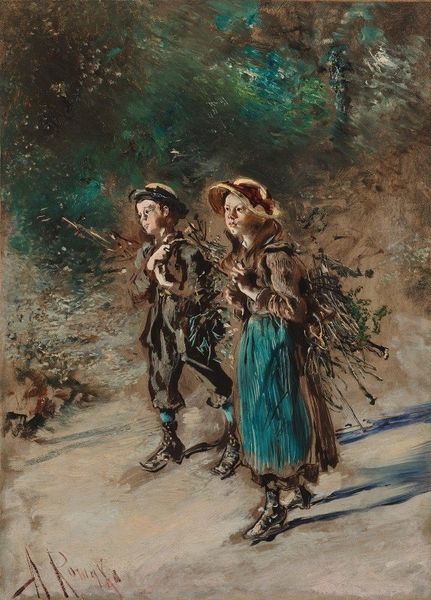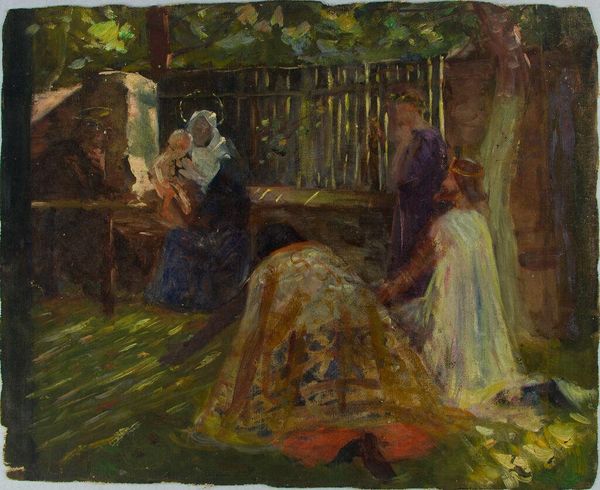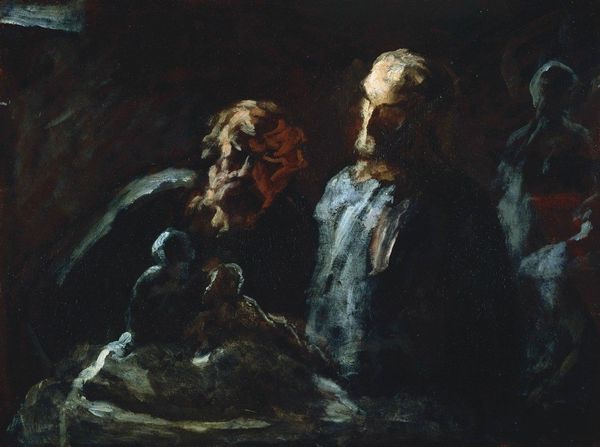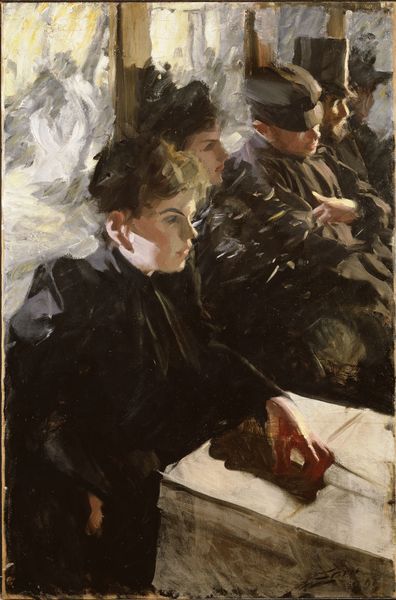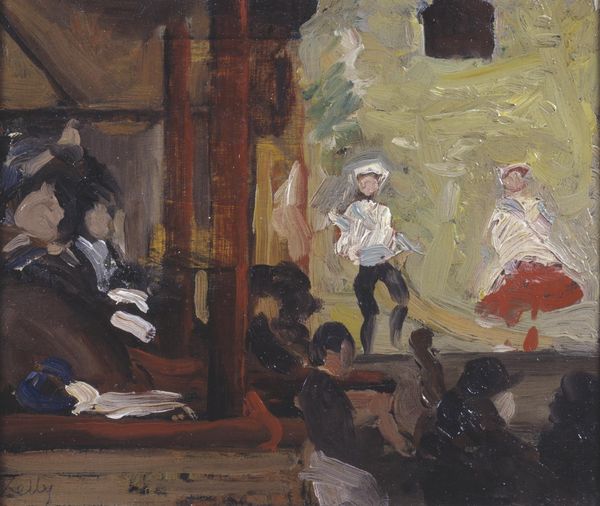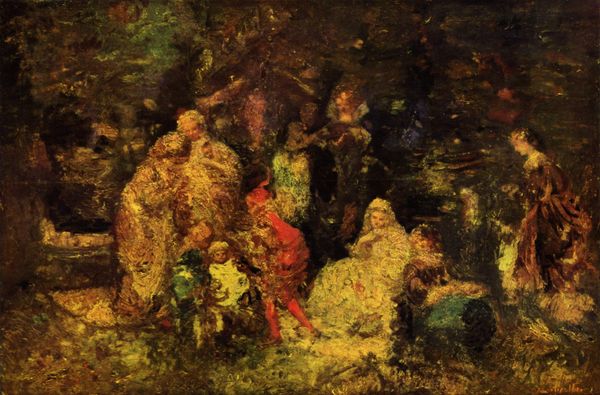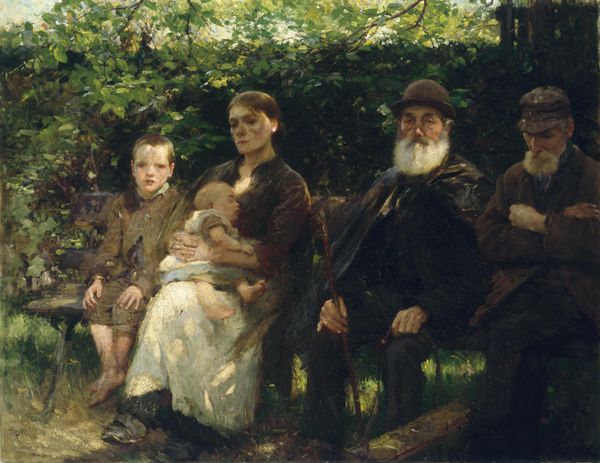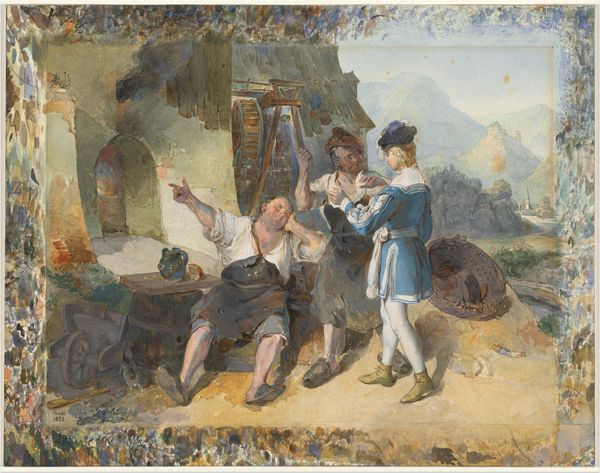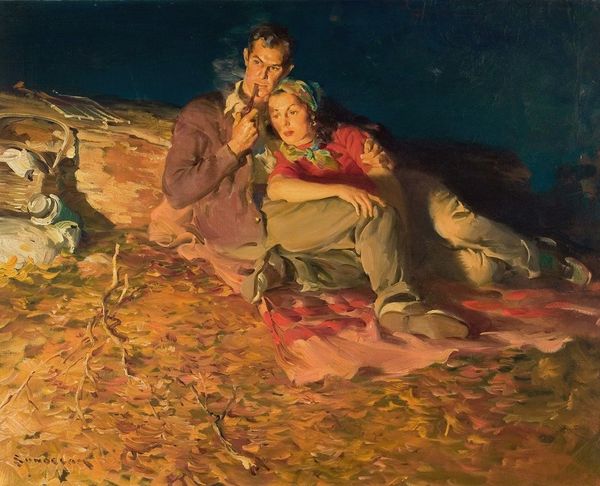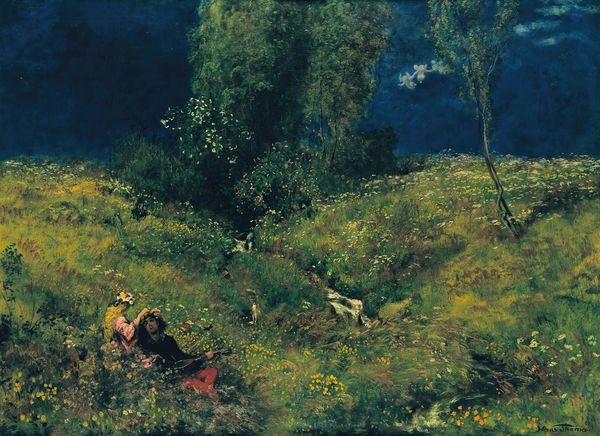
Copyright: Public Domain: Artvee
Curator: Let's discuss John Singer Sargent's "In the Generalife," created circa 1912, executed in watercolor. What strikes you immediately? Editor: A feeling of quiet observation. There is this distinct contrast in the tonal weight within the scene. The artist guides the viewer with the darks nestled in the foliage drawing attention to a very light background figure and similarly with the three foreground figures in shadow to the sunlight in the back garden. It feels voyeuristic, somehow, like a captured, intimate moment. Curator: Considering Sargent's social circle, these figures likely belonged to the leisured class, enabled by the economic structures of the time. The painting, then, is a record of that specific experience—a wealthy class passing time. We can speculate about their role in production based on what materials like paint and paper where available when he was producing this landscape genre-painting. Editor: Absolutely, but let’s look at the brushstrokes. The speed and fluidity with which Sargent captured light and form. The economy of line, each stroke deliberately placed. Note how the use of negative space allows the watercolor paper itself to define forms. Curator: Speaking of deliberate placement, consider how the ready availability of these materials and locations dictated what he was painting. Plein air watercolor painting facilitated the rise of leisure painting as a product that consumers now expect. The painting style then becomes less about personal aesthetic vision and more about social, cultural, and technological possibilities. Editor: While those factors undoubtedly shaped his work, look at the artist's rendering and choice of perspective of that immediate experience. It brings a level of artistic genius beyond any technological advances or availability of paint and materials. The composition invites us to interpret the scene, the mood of quietude—not just document social production, but to represent how these things are felt. Curator: The tension between social and environmental realities versus artistic intent is key. This painting, therefore, embodies an individual encounter of class relaxing in a cultivated and landscaped estate. A commentary on art's capacity to immortalize lived existence and reflect historical circumstance within a particular cultural background. Editor: Well, whether you see it as the means of production allowing it to occur or a brilliant choice by the artist, "In The Generalife" captures an impressionist landscape, inviting us to look closer into form, structure, and light.
Comments
No comments
Be the first to comment and join the conversation on the ultimate creative platform.
